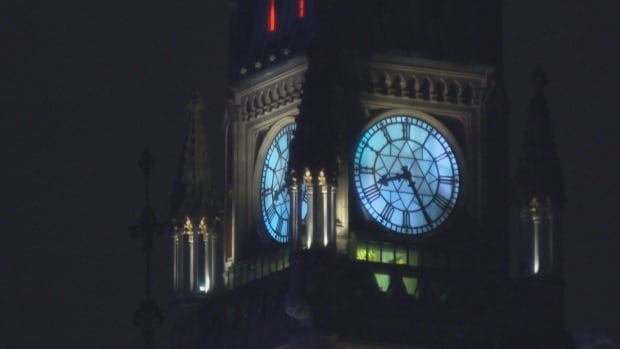
This First Person column is the experience of Peter Warwick, who lives in St. Catharines, Ont. For more information about CBC’s First Person stories, please see the FAQ.
Come the annual time change in November, I will not make the switch from daylight to standard time. I will remain on daylight time.
It started as an experiment about four years ago. Doing so gives me an extra hour of daylight in the afternoon, shortens the night and gives me a lift at a time when I need it the most.
Only my bedroom and kitchen clocks — which are manually adjusted — remain on daylight time; I rely on them to extend my afternoon and to govern my bedtime. However, the clocks on my cellphone and computer automatically change; these keep me from missing appointments and other events where keeping in sync with regular time is important.
Daylight saving time ends Sunday, but some provinces are considering eliminating the practice. In Ottawa, the opinions about it are mixed.
I suffer the winter blahs, the forgotten cousin of seasonal affective disorder. Emotionally it’s like wearing mildly damp clothing, day in and day out. It’s not unusual for me to become very depressed and, while it lifts after several days, I’m not quite the same afterward.
It’s the most pessimistic time of the year for me and I live in dread of it.
Creative use of light
There was no ah-ha moment that made me take a proactive approach to the winter blahs. It happened gradually. For example, I began writing down the times of sunrise and sunset for certain days of the year. This helped break down the season into more manageable bites, like breaking a large task into smaller parts.
Where I live in southern Ontario, we get about nine hours of daylight in late December, compared to 15 hours and 23 minutes in the third week of June.
It’s not just the decreased amount of daylight that gets to me. There’s the angle of the sun, which is more on the horizon in fall and winter, cooler temperatures and a lack of green leaves and flowers. The landscape takes on a bleak look.
Now, my life revolves around light and my creative use of it.
I enjoy waking up in darkness and watching the sunrise. Once I’m awake, I try to let in as much natural light as possible.
Throughout the day, I seek out rooms with the most natural light. As my house faces east, I tend to spend my mornings reading in the living room and the afternoons in my office at the computer.
Artificial light also plays an important role in handling the winter blahs.
About 16 years ago, I got some much-needed lights for the kitchen and discovered that not only did it improve the lighting, but it also improved my mood, especially during the fall and winter and on dull days. I began experimenting with putting them in other places — in closets, above the kitchen counters and over my bed for reading.
In my office, for example, I’ve strategically placed a light over the windows. At night, with the ceiling light off and the window light on, it gives the appearance of moonlight, making it seem like I’m in a totally different space.
To make maximum use of both kinds of light — natural and artificial — I’ve painted the walls of my house in bright colours: whites, yellows and greens. Our bedroom is done in lighter shades of blue as it reminds me of the beach.
Every six to eight years, I undertake a major paint job. I try to choose colours that I will enjoy for many years. Currently, I’m painting the kitchen cupboard doors white. (They had been a dark green — a big mistake!) While I still have a long way to go before I finish, it’s already having a positive impact on me.
Of course, I try to get outdoors even if it’s just to step outside for a few minutes, especially on a sunny day. And when I can’t get out, if it’s too unpleasant, I look at photos I’ve taken during the spring and summer or take a virtual walk with the help of Google Street View. My favourite is along the boardwalk at Point Pelee. I can even take a virtual boat ride in the adjacent wetland.

One of the few things I like about this time of year is my better quality of sleep due to the later sunrise. From May to July, the sun rises in Niagara before 6 a.m., which leaves me feeling jet-lagged.
Remaining on daylight time year-round doesn’t impact me much in the morning — I’m an early riser — but it makes a huge difference in the late afternoon. On standard time, it’s dark at 5 p.m. in November and December; on daylight time it’s still light out.
Though these months are difficult, there are two days that I look forward to each season: one comes in mid-December, the other during the second week of January. That’s when sunset happens a minute later and sunrise arrives a minute earlier, and I’m reminded that the worst is over and spring will soon be here.
Do you have a compelling personal story that can bring understanding or help others? We want to hear from you. Here’s more info on how to pitch to us.
